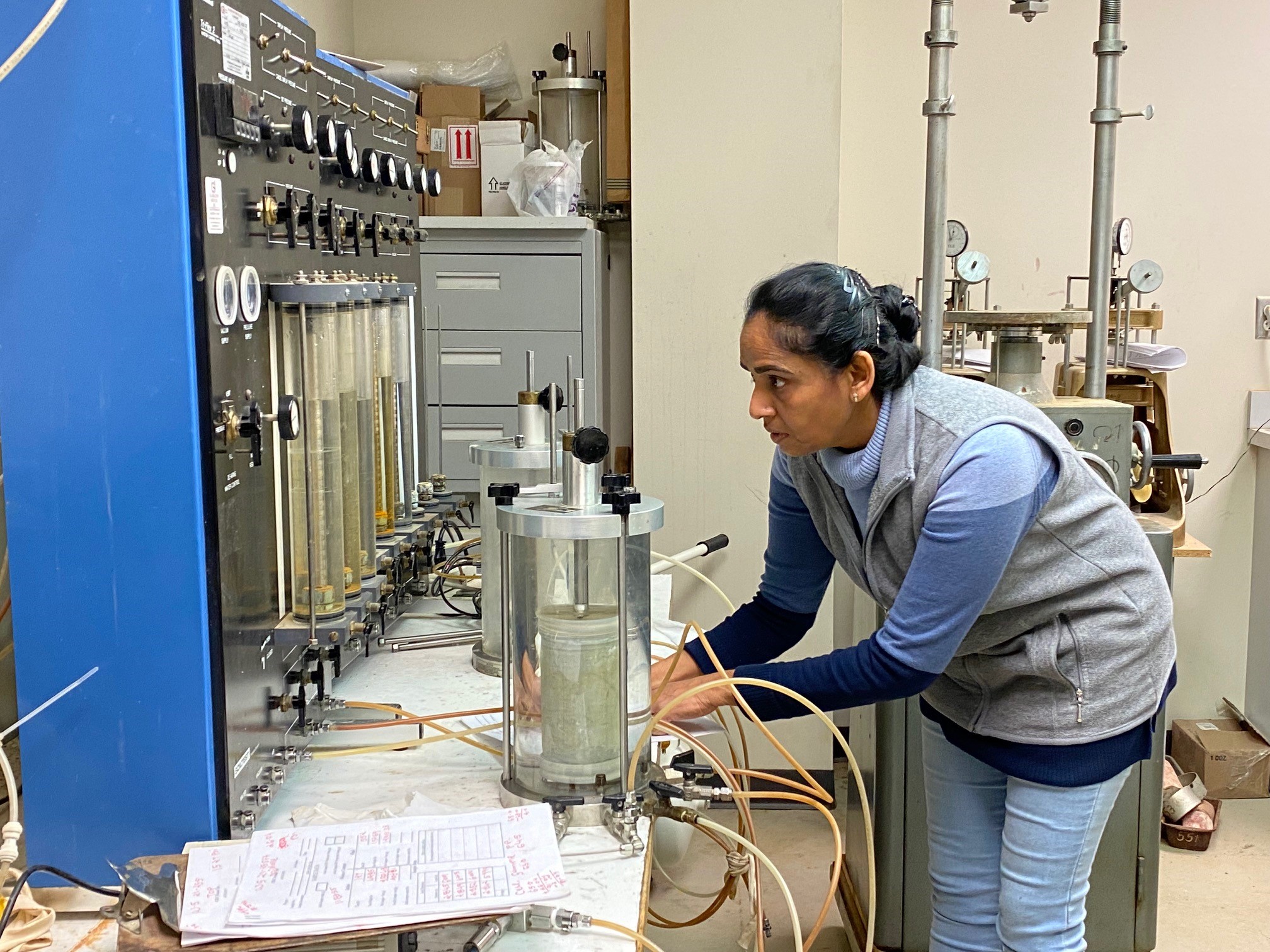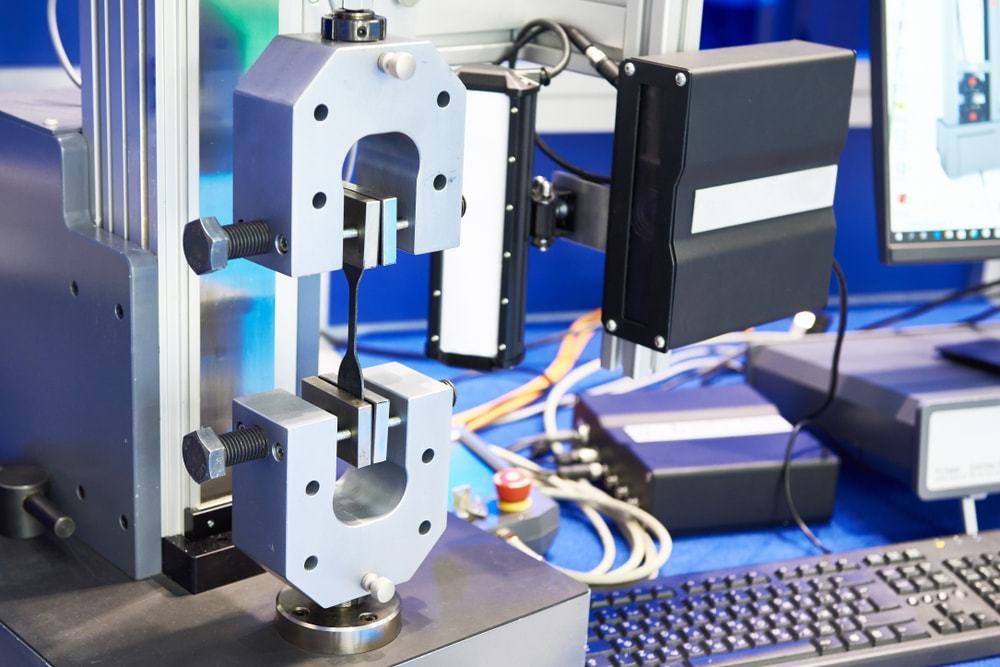Dive into Accuracy: Materials Test Lab Precision Unleashed
Wiki Article
Pressing Borders: Discovering Strategies in Products Screening
In this seminar, we will dig right into the innovative and cutting-edge techniques made use of in the field of products screening. As innovation breakthroughs, so does our capability to press the boundaries of what is possible in screening and evaluating numerous materials. Join us as we get started on a journey of exploration and expedition in the realm of materials screening.Advanced Imaging Technologies
Advanced imaging technologies have changed the field of materials screening, permitting researchers to dig much deeper right into the structural residential properties of materials. These advanced strategies have actually opened up brand-new methods for studying and analyzing products, offering beneficial insights that were previously unattainable.One such sophisticated imaging modern technology is X-ray calculated tomography (CT), which uses X-ray beams to produce 3D photos of the inner structure of materials. By capturing multiple X-ray pictures from different angles and reconstructing them, researchers can picture the interior attributes and issues of products with remarkable detail. This non-destructive method is especially beneficial for taking a look at intricate frameworks, such as composite products or elements with complex geometries.

In addition, atomic pressure microscopy (AFM) has become an useful device for identifying the surface homes of products at the nanoscale. By checking a sharp probe throughout the material's surface, AFM can measure forces and produce thorough topographic maps, providing important info regarding surface roughness, mechanical buildings, and attachment pressures.
Cutting-Edge Simulation Approaches
A variety of state-of-the-art simulation methods are pushing the boundaries of materials testing, offering researchers unprecedented insights right into material actions. These cutting-edge simulation methods utilize innovative computational methods to model and forecast the performance of products under different conditions. By imitating the actions of products at the molecular and atomic degree, scientists can much better comprehend the underlying mechanisms that control product residential or commercial properties and performance.An additional powerful strategy is finite component analysis (FEA), which splits a complex framework or product into smaller, a lot more manageable aspects and assesses their behavior under numerous loads. FEA is commonly made use of in engineering and materials science to study the reaction of materials to mechanical, thermal, and electro-magnetic pressures.
Moreover, multiscale modeling incorporates various simulation methods to connect the void between atomistic and macroscopic scales. By incorporating info from various size ranges, scientists can precisely predict the actions of products under real-world problems.
These innovative simulation approaches are revolutionizing products screening by providing insights that are otherwise challenging or impossible to acquire experimentally. They make it possible for researchers to maximize material style, check out new materials, and enhance the performance and reliability of existing products in a large array of sectors, from aerospace to biomedical.
Non-Destructive Testing Strategies

- Various non-destructive testing methods are utilized in materials evaluating to analyze the residential or commercial properties and honesty of products without creating damage. These strategies play an essential function in numerous sectors, including aerospace, vehicle, building, and manufacturing, where the top quality and reliability of materials are vital.
One commonly used non-destructive screening strategy is ultrasonic screening. This technique entails sending high-frequency acoustic waves via a material and examining the mirrors that recover. By gauging the moment it considers the echoes to return, service technicians can figure out the density of the advice material, spot inner imperfections, and examine the total structural honesty.
An additional commonly made use of technique is radiographic testing, which click makes use of X-rays or gamma rays to examine products. This technique is especially efficient for identifying interior defects such as splits, spaces, or inclusions. By revealing the material to radiation and recording the resulting photo on a film or electronic detector, technicians can evaluate the top quality and soundness of the material.
Various other non-destructive screening techniques consist of magnetic particle screening, dye penetrant screening, and eddy existing screening. Each technique has its very own unique advantages and appropriates for particular product kinds and applications.
High-throughput Screening Approaches
High-throughput testing methods offer a efficient and comprehensive methods of reviewing materials in huge quantities throughout the testing process. This strategy involves the simultaneous testing of countless samples, enabling for the quick identification of products with wanted features or residential or commercial properties.Among the key advantages of high-throughput testing methods is the ability to test a variety of products in a short period of time. Typical testing approaches frequently call for time-consuming and labor-intensive procedures, making it difficult to examine lots of samples. With high-throughput screening, scientists can quickly examine products on a range that was previously not feasible.
An additional internet advantage of high-throughput screening is its capability to recognize products with specific buildings or qualities. By evaluating a huge number of examples, scientists can determine materials that display particular homes, such as high stamina or excellent conductivity. This allows scientists to customize materials for details applications or industries.
High-throughput testing techniques likewise permit for the exploration of new materials with special properties. By evaluating large quantities of materials, scientists can reveal products that display unique attributes or habits. This can cause the advancement of new materials that have a vast array of applications, from advanced electronics to power storage space.
Unique Multi-scale Evaluation Methods
The implementation of unique multi-scale evaluation techniques improves the precision and accuracy of products checking processes. By integrating multiple ranges of evaluation, researchers are able to gain an extra thorough understanding of the actions and buildings of products. Conventional materials testing methods usually concentrate on macroscopic residential properties, however these methods fall short to catch the elaborate information and communications that happen at smaller ranges.One example of an unique multi-scale evaluation method is making use of computational modeling. By replicating the habits of materials at various ranges, researchers can forecast and recognize their mechanical, thermal, and chemical homes. This allows for even more precise predictions and optimizations of product performance.
Another approach includes the use of innovative imaging methods, such as electron microscopy and atomic force microscopy - materials test lab. These techniques make it possible for researchers to visualize and assess materials at the nanoscale, giving insights right into their microstructure and composition. By incorporating these monitorings with macroscopic screening data, an extra total picture of the product's behavior can be acquired
Furthermore, the combination of equipment knowing formulas and information analytics in materials testing has actually additionally improved the accuracy of evaluation. These approaches can identify patterns and connections in big datasets, permitting for faster and much more effective evaluation of products residential properties.
Verdict
In final thought, the exploration of techniques in products testing has led to substantial improvements in different areas. Non-destructive screening methods have enabled the analysis of product integrity without creating damages. These developments have pressed the limits of products screening and paved the means for additional research and development.
A variety of state-of-the-art simulation approaches are pressing the limits of materials screening, providing scientists unprecedented understandings into product behavior (materials test lab). By simulating the habits of materials at the molecular and atomic degree, researchers can much better understand the hidden mechanisms that regulate product buildings and performance
Many non-destructive testing methods are used in materials checking to check out the homes and honesty of materials without triggering damages. By exposing the material to radiation and catching the resulting photo on a film or electronic detector, specialists can examine the top quality and stability of the material.
By examining huge quantities of materials, researchers can discover products that show novel qualities or habits.
Report this wiki page